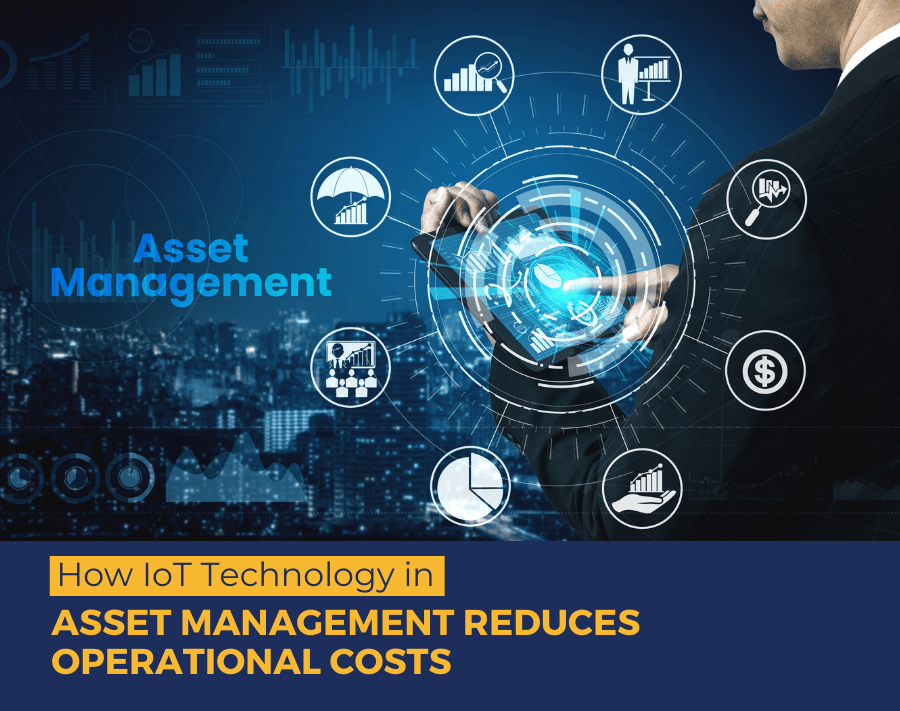Every enterprise has to spend a lot of money on operational expenses. However, with a proper asset management system in place, entrepreneurs can reduce such expenses. Be it a manufacturing sector or a utility sector, the productive utilization of available assets is the key to profitability. But then, such utilization needs effective tracking, measuring, and monitoring of assets.
Here, IoT in asset management system technology lends a helping hand.
The IoT technology is integrated into the asset tracking software for tracking and monitoring assets in real-time. IoT-based asset tracking is a faster and cost-effective way to stay ahead of the curve by ensuring effective management of physical assets.
Let’s understand IoT asset tracking and management and how it contributes to reducing various costs over the period. But before digging deep into it, we need to discuss the key features of asset tracking systems.
Asset Tracking- Importance and Introduction
As the name suggests, asset tracking is the process of tracking humans or equipment within a manufacturing facility to ensure their optimum utilization. These days, advanced concepts including RFID (Radio Frequency Identification), NFC, GPS (Global Positioning System), IoT, and BLE are being used for asset tracking. The asset tracking software can display the collected real-time data on a screen.
Asset tracking can give a complete overview of all processes and the status of assets in real-time. With a proper asset tracking, entrepreneurs can not only save costs but also reduce the loss or damage. It directly increases the company’s profitability.
We can consider four features for identifying the most useful asset tracking system. These features are – asset tracking reporting, asset tracking alerts (real-time), asset tracking analytics, and asset depreciation tracking. Thanks to evolving IIoT (Industrial IoT) technology, it is possible to manage assets in a smarter and more advanced way than ever. IoT asset tracking is highly accurate, intelligent, and comprehensive as compared to legacy asset management systems.
Four Ways IoT Makes Asset Management System More Effective
IoT plays a vital role in remote asset management. Here are the key ways IoT helps companies manage assets and save big on various expenses.
1. Real-time Mobile Asset Tracking
Asset tracking includes tracking with the help of mobile devices and sensors embedded in assets and vehicles. WIth IoT-based asset tracking software, companies can know the location, current status, and operating performance of assets in real-time. Entrepreneurs and the company management can also see the performance using mobile devices. As a result, enterprises can monitor equipment and other physical assets more effectively.
2. Tracking in Remote and Hazardous Locations
The IoT technology enables companies to monitor their machinery or assets without human intervention. Remote asset monitoring solutions can facilitate manufacturing and other industry sectors to achieve reduced operational costs.
The software can automatically trigger alerts and initiate a service response in real-time. Companies can put IoT sensors throughout the plant to determine when equipment will need maintenance proactively. IoT sensors can also work seamlessly in risky areas where humans cannot enter or stay.
Also Read- Why Digital Transformation is The Key To Success For Any Industry In 2021
3. Human Asset Management
One of the most interesting use cases of IoT asset tracking is human asset management. It is possible to track, monitor, and measure human resources without compromising privacy and breaking the prevalent laws. Embedded sensors in the employee’s uniforms and helmets can detect toxic gases or any unwanted situation quickly.
These sensors can also send warning of over-exertion of the employee based on their heartbeat. In a way, IoT ensures effective management of valuable human asset along with other physical assets.
4. Asset Performance Measurement
These days, most companies face challenges related to budgetary constraints, stringent laws, and intensifying competition. It is, therefore, imperative for companies to improve asset performance irrespective of age of physical assets.
Here, entrepreneurs can make informed decisions through real-time actionable insights. Asset performance management enables them to make such decisions based on forecasting and knowledge.
We know that data will play a crucial role for companies to thrive amid increasing competition. With IoT-powered asset tracking software, your company can measure the asset’s performance effectively and get a competitive edge over peers. Also, real-time data can assist the management to remain proactive for maintaining assets, thereby reducing high repair and maintenance costs.
Concluding Lines
In a nutshell, IoT remote asset monitoring and management solution contributes to increasing asset ROI over the period. All you need to transform various processes by integrating the IoT technology in the plant in line with your business model. An end-to-end solution for remote asset tracking, asset lifecycle management, and asset workflow automation can increase productivity and productivity of your enterprise while enabling you to save various costs.
Rejig Digital is a leading provider of digital transformation solutions. We provide the best-in-class remote asset management and monitoring solution to various industry sectors.
Our experienced developers take care of all the project requirements while developing asset tracking software in line with the client’s business model. We integrate technological advancements of IoT and AR in our customized, robust asset management solution.






